This week the Wednesday Comics Reviews team tackles a restored classic with 1979’s Black Star #1 (printed in English for the first time), a stunning debut with Out of Alcatraz #1, and a trip deep under the sea with Crush Depth #1. We also look ahead at a new titles eligible for pre-order, specifically Buried Long, Long Ago and The Slasher’s Apprentice. Plus, as always…The Prog Report!
 Black Star #1
Black Star #1
Writer: Ricardo Barreiro
Artist: Juan Giménez
Letterer: Ezequiel Inverni
Translator: Mauro Veliz
Publisher: Alien Books
Review by Zack Quaintance
Black Star #1 is a sort of lost sci-fi classic, a 1979 comic that was originally published in France. It features artwork by the great Juan Giménez, the Argentine artist who drew some of the best and most-detailed machinery to ever grace the page. Giménez, who designed the “Harry Canyon” portion of the cult classic film Heavy Metal, contributed work in the 1980s to famed European magazines, including the French Métal Hurlant and the Italian L’Eternauta. His best-known comics are perhaps Metabarons, a series in which he collaborated with Alejandro Jodorowsky on characters from his famed Incal comics.
Giménez also collaborated on a series of sci-fi comics with writer Ricard Barreiro, and one of those — Black Star #1 — gets its first-ever English language translation this week — and it’s an absolute stunner.
Coming in at 50-plus pages of comics art, it’s a fast-moving complete story comic that feels inspired by Star Wars (it was 1979, after all) without ever feeling wholly derivative. The book’s standout quality is obviously Giménez cartooning. It’s like someone took Jack Kirby machines and imbued them with Mœbius-level creativity and flare. This book, like much of Giménez’s work, is a classic of industrial, slummy mechanical junk cartooning, right from its very first page.
Reading it now, I was reminded that the late ’70s/early ’80s period was a peak for imaginative design work that is yet to be surpassed. It’s as if that period’s infrastructure degradation — most prominently popularized by Star Wars — unlocked the collective creative mind. It’s present here in everything from the cluttered cityscapes to the motocycles to the guns. But Black Star only really stars with that motif, before rapidly moving between (several) other settings and even genres.
While Black Star opens with an action-heavy, high octane motorcycle chase, that’s really just to reel the audience in before it moves into hard sci-fi. And that’s where it really starts to separate itself from any Star Wars comparison. There’s a level of science here that might have felt inaccessible in a mainstream movie, but is right at home in a comic, conveyed cleverly through a mix of dialogue, flashbacks, and even some fun diagrams. I got the sense that if I wanted I could have gotten lost in the science behind the ideas where, even though I choose to mostly read over them, getting back to the action.
And it was easy enough to do that, as Black Star moves seamlessly from hard sci-fi into other touches of genre territory, including an assemble-the-team heist and, ultimately, a zombie space horror thriller. A lesser comic could have felt over-stuffed with all this, but Black Star does great and efficient work early on endearing its cast of characters to the reader. And, of course, the whole affair is unified by the stunning artwork.
What I was also struck by was how timely the characters felt in this comic. There’s a “liberal android” who says things like “…if this has nothing to do with assaulting some poor people asking for food, then I’ll gladly hear you…” There’s a young woman pilot who has her skills questioned because of who she is, and there’s a greed pulling the strings here (although I won’t quite spoil that). It all feels both of its time in terms of aesthetic and out-of-era in terms of the ideas in play, which makes it a great book to be newly-translated in this present moment.
Overall, I found Black Star to be an absolute treat, and I think any of my fellow weekly comics sickos will feel the same way. Track this one down, friends, you won’t regret it.
 Out of Alcatraz #1
Out of Alcatraz #1
Writer: Christopher Cantwell
Illustrator: Tyler Crook
Publisher: Oni Press
Review by Clyde Hall
Between the evening of June 11th and the early morning of June 12th, 1962, three convicts serving time at the Federal Maximum Security Penitentiary on Alcatraz Island – Clarence Anglin, John Anglin, and Frank Morris – broke out of their cells and escaped the Rock using an improvised raft. Despite no bodies being recovered from San Francisco Bay, the official finding was that all three drowned. This five-issue miniseries launches with a premiere that’s lean on how the famous escape was planned and carried out, but what may have happened if reports of their death were unfounded. And that’s okay. The planning and escape execution have been examined in multiple documentaries and dramas. Presented as it is here, the comic may prompt readers to find out more about the prison and its broader history, including the Battle of Alcatraz in 1946.
Writer Christopher Cantwell explores not only speculation regarding how some of the escapees may have survived, but more interestingly, how they escaped going back to prison. Because inventive and determined people like these three, they can overcome incredible obstacles with a fixed goal in sight. But changing their nature once free, distancing themselves from the lifestyles and crimes which got them caught in the first place? For many, that’s like changing your DNA. It’s not that easy, as any fan of Better Call Saul can attest.
And Cantwell has done due diligence examining and assessing common threads in how other successful prison escapes were accomplished. The writer is, however, a prisoner of certain facts and details regarding the case. It’s a limiting factor. One that tamped down twists and reveals which might otherwise have been surprising, except that they help his fiction align with history.
Despite this, Cantwell fills out unrelated fictional nuances skillfully, ones which are plausible and speak to the era’s morals and mindsets. These extend into the ranks of the lawmen and agents working the case. His examinations of the convict’s personalities, particularly regarding Frank Morris, not only work but become reasons the aftermath details unfold slowly and cautiously. It’s a tact that someone as wily as Morris would undoubtedly ply as a primary key to staying outside penitentiary walls. It also allows mystery bent into hooks for the reader.
Tyler Crook’s cover is a tribute to Hitchcock’s Vertigo movie poster by Saul Bass. His interior work captures the same feel but with a layer of gritty 1960s realism overlying any flashy showbiz pretense. Crook spent time studying mugshots, evidence photos, and everyday items found in the era’s motels and bars, and it shows. None of it edges out impressive expression work when it comes to the characters, though. Moods of both the convicts and those they encounter while securing lasting freedom turn on a silver ‘60s dime. Crook capitalizes on every capricious whiplash, jovial to jeering, loquacious to lethal.
The final product is good storytelling bolstered by the right art style as reasons enough to pick up the next installment. The one drawback? It could be too history based for casual readers, but too fictional for those who like historical mysteries. If you land anywhere between, however, Out of Alcatraz is a new title worth exploring.
 Crush Depth #1
Crush Depth #1
Writer: DB Andry and Tim Daniel
Artist: Alex Sanchez
Colorist: Kurt Michael Russell
Letterer: Justin Birch
Publisher: Mad Cave Studios
Review by Jared Bird
Crush depth refers to the pressure level at which a submarine collapses in on itself, crushing everything inside. Science Officer Liana Pearson will soon have to face what that’s like. Caught in between a wrestle for power between two brothers over the submarine The Absolution, and fighting off the infiltration of an unknowable and alien force, Liana will have to either face the toxic world of the surface that she fears or steer the sub into an unforgiving oceanic abyss.
Horror genre fans like myself might find the premise similar to the 2020 film Underwater, but Crush Depth makes sure it stands out in spite of the familiarity of its core concept. Known for writing Morning Star, the collaborative duo of DB Andry and Tim Daniel team up with Alex Sanchez (Katanna, Star Wars: The Old Republic) for this chthonic horror miniseries. The first issue takes its time setting up the core character dynamics at play and introducing us to the cast, particularly the compelling protagonist Liana Pearson, who is thankfully not a simple audience surrogate. The horror is there, and it hits hard when it arrives, but this series understands that you need to put in the leg work first to allow the audience to get invested.
Andry and Daniel’s write together incredibly seamlessly. Their work comes across as a totally unified voice, and you can’t easily distinguish which writer did what. They’ve got a good sense for character development and easily make every character aboard the cluttered ship standout, even if they only get brief page time and presence. The methodical pacing of the series shows that they understand the best horrors are hidden and built to, which signifies that the rest of the series will likely keep up the good trajectory.
Sanchez’ artwork is fantastic. His style is reminiscent of 90’s creator-owned comics, but with a sense of detail and polish that reminds me of manga series like Blame! or Claymore. He has a great sense of pacing and page layout, building an atmosphere of tension and anxiety, and when he gets to let loose on splash pages, he makes it count, delivering beautifully detailed and striking images that will stick with the reader once they’re done reading the issue. He’s aided by fantastic colors from Kurt Michael Russell, who shines on every page.
Overall, Crush Depth #1 is a great read, an exciting and intriguing start to a new horror comic that goes beyond its familiar premise thanks to the talent of the creative team involved. If you are partial to cosmic horror in any capacity, you will undoubtedly enjoy the story the team is telling her, for sometimes the scariest things aren’t far away in space, they’re right here under our very cities and continents.
 Who Are the Power Pals? #1
Who Are the Power Pals? #1
Writer: Duane Murray
Artist: Ahmed Raafat
Letterer: Rob Jones
Publisher: Dark Horse Comics
Review by Jordan Jennings
Derek Summers and Alex Green are two actors trying to recapture stardom after an all too brief taste in the 1990’s with their failed superhero tv show “The Power Pals.” With the duo struggling to get gigs, they decide to don the Power Pals costumes once again in a bid to grift some money from tourists and discover there might be some magic left in those old costumes as they start to begin to do heroic deeds and garner publicity. However, they are soon to learn that not all publicity is good publicity.
Who Are The Power Pals? #1 is an quite effective first issue that manages to weave humor in with some earnest character moments. Writer Duane Murray does a stellar job creating the lead characters of Derek and Alex alongside this world where something like The Power Pals could have existed briefly on TV. The fact that each of the leads have their own motivations and desires in just relatively few comic pages is no small feat by Murray. While the premise itself is a bit silly, the challenges of being a working actor in Hollywood feels very real and contributes to those aforementioned earnest moments. I do wonder if Murray’s experience as an actor contributed to this bit of characterization because of how real it feels.
Murray uses some interesting narrative devices to not only provide backstory and characterization, but build the world. The opening bit with Derek and Alex’s failed audition is not only funny and provides a novel way to show how they approach acting even for such a bit part like “Cop #5.” Not only that, but the use of Power Pals “TV footage” is really interesting. It accomplishes so much for the characters by 1) giving the reader a look at this fictional show to see how corny it is (We are talking Batman ‘66 but with 90’s slang.) 2) giving the characters this weirdly nostalgic look. Derek and Alex look at returning to the Power Pal’s in two different ways with Derek viewing it purely transactional and Alex having this almost altruistic turn to being a real hero. It is strangely compelling.
The writing also has this almost Kevin Smith feel to it. I read the character in the voice of Dante and Randal from Clerks. While this does come from Murray’s approach to comedy and his dialog banter, it also comes from artist Ahemed Raafat’s visually distinct art style. It is no shocker that Raafat illustrated the Kevin Smith penned Quick Stop stories that are set in the View Askewnierse. It has shades of Clerks the Animated Series but is very much it’s own with relatively bold character designs and vibrant pops of flat colors.
Raafat plays around with panel layouts and composition. The tv footage is presented in a relative 4:3 ratio panel size which not only continues the emersion of this being Pre-HDtv but also allows for a rapid succession of panels and makes the page count really efficient in conveying a lot of back story. Raafat’s layouts are also complimented by his subtle emotive body language that really makes the more earnest moments hit harder.
Overall, Who Are the Power Pals #1 is an effective comic that hits all the marks. The plot promises to be more than just a couple guys trying to relive the glory days and that makes me all the more interested in where it goes from here.
Final Verdict: Buy
Rapid Wednesday Comics Reviews
The Deviant #9 (Image Comics): I typically shy away from true crime; something about it makes my skin crawl (no judgments though); I think there’s something to be said about how we investigate the lives of real people, bringing a sort of voyeuristic eye to them and their harm. I think that throughout The Deviant, writer James Tynion IV has done that investigation through this moody and human story about approaching and looking into the abyss and what that reveals in us, what that connects in us. Its humanity is beautiful, a complement to the beautiful art of Joshua Hixon and the ever-masterful lettering of Hassan Otsmane-Elhaou. Things are wrapped up in a satisfying package that is interested in the killer and the victims both of the murder and of the state and the ideology; it’s interested in the people. I think once you get to know the people, the crime is less sexy, it loses its mystique because now it feels further away. It definitely warrants going back to the earlier issues to see how the reveals play out and the pieces there, but I definitely recommend this issue and story on the whole. —Khalid Johnson
Mouse Guard: Dawn of the Black Axe #1 (BOOM! Studios): Years ago when I was writing reviews for another site, I was assigned a collection of Mouse Guard short stories. In preparation, I read the first volume of Mouse Guard. I kept going and going until I read every Mouse Guard comic released. I did not need to do this but David Peterson’s stories are too rich and beautiful to put down. More than the art, Peterson’s writing builds an evocative world rich in history and full of endearing characters and stories of bravery, community, duty, and compassion. This time, instead of writing and drawing, Peterson is joined by artist Gabriel Rodriguez. But Rodriguez is no consolation prize. His art is in the same school of cartooning with meticulous linework and dramatic sense of scale. He evokes Peterson’s thick linework and heavy cross hatching, but gives his own flavor, with a more fluid brushstroke that grants this volume a softness that fits its more storybook framing. The absurd action of these tiny creatures in violent combat, clad in bulky armor and wielding massive medieval weaponry, is as charming as ever. Peterson colors the book, which adds to the continuity of the visuals with previous volumes. Dawn of the Black Axe is a prequel to the previous Mouse Guard volumes, featuring the origin of the mythical Black Axe of the title. That makes this work on its own for the Mouse-curious but it also enriches the adventures longtime fans of the series have been following. It is a comic full of wonder and discovery, of the fantastic and the deeply human (despite its rodent heroes.) Nearly twenty years from its first release, Mouse Guard is still as stunning as ever. —Tim Rooney
FOC Watch
These books are available for pre-order now.
 Buried Long, Long Ago #1
Buried Long, Long Ago #1
Writer: Anthony Cleveland
Illustration: Alex Cormack
Letters: Justin Birch
Publisher: Mad Cave Studios
Publication Date: April 16, 2025
Review by Clyde Hall
The cases of early United States serial killers accounts for a dark thread running through the quilted squares of our national identity. Whether it’s the murder spree of the infamous Harpe Brothers across the frontier Southwest of the 18th century or the grisly career of Chicago’s Herman Webster Mudgett, better known as H.H. Holmes, many readers have a fascination for serial killer histories predating 20th century notables such as Ted Bundy and John Wayne Gacy.
Buried Long, Long Ago is a five-issue miniseries exploring an early American serial killer very distinctive from those listed above. And in the first issue, we are introduced to Belle Gunness and her daughters. In the early 1900s, their family resided on a pig farm in La Porte, Indiana, and the residence would later be excavated as a veritable graveyard for Belle’s victims. It’s an introduction shaped in a shadowy, European fairy tale form which sets the right tone for one of America’s first female serial killers.
It’s a fascinating case, one which fits many of the male gender crimes of the same eras yet differs from the pattern of most female serial killers. Like the Harpes and Holmes cases, Gunness’s underlying criminal enterprises were financially motivated. The Harpes were highway robbers, Holmes a repeated insurance fraudster, and the best way to keep from getting caught was permanent silence from the victims or the accomplices. Belle obtained revenue to buy her farm after finding that insured properties suffering fires and insured spouses and children who died were great sources of funding.
Unlike many female killers before her time and since, Belle’s approach was more hands-on. While they tended toward poisoning or subtle but lethal methods of killing their victims, Belle was a stout, strong woman and had worked as a butcher. She was also rather a plain woman, yet with her own farm and a household of girls, Gunness’s newspaper ads seeking a husband to join her in running both was really all the appeal she required. The result was a steady stream of candidates to her pig farm bringing with them their own possessions and savings to the coming marriage. Every bride-price was accepted, and in short order the would-be grooms were introduced to the business end of a butcher’s block.
In the premiere, Belle’s daughters join her in Indiana from their previous home in Chicago with relatives. The oldest, Jesse, witnesses the Beta test for Belle’s homestead plans. There are already poultry farms and meatpacking operations in their Midwest setting. The Gunness spread will be a bit of both.
Writer Anthony Cleveland handles Belle’s speech well. English was not her native language, and both the wording and tone fit her Norwegian roots. More, Cleveland crafts her dialogue with turns of phrase building a steady undercurrent of foreboding. He shows that 1900s kids were still kids. And he expertly emphasizes this using the Old World style of fairy tales, those meant as couched warnings to children regarding dangers very much present in the real world.
The artwork of Alex Cormack impressively connects the spirit of Alice’s Looking Glass with the essence of the Lizzy Borden sitting room. From his first panel, you expect a coming collision between the dreamscapes of childhood and the nightmare fuel of a human charnel house. And with his last panel, you won’t come away disappointed.
Mad Cave promotional material says the story is based on the history and accounts of Belle Gunness, and hers is not always the most clear cut history given the passage of time. There are some variations here from backgrounds I’ve read about her, so readers well-versed in the case should expect them.
As with film, even good comic book adaptations sometimes need trimming to fit the history within the panels. As an armchair sleuth regarding the Gunness case, Buried Long, Long Ago has the right opening act to lure me in. And given the questionable real life final act of her killing spree, I can’t wait to see how Cleveland and Cormack draw the final curtain on Belle Gunness with their last issue.
 The Slasher’s Apprentice
The Slasher’s Apprentice
Written by: Justin Richards
Art by: Val Halvorson
Colored by: Rebecca Nalty
Lettered by: Buddy Beaudoin
Publisher: Mad Cave
Publication Date: April 30, 2025
Review by Ricardo Serrano Denis
Slashers are not just their kills, but when they get creative with them they tend to be memorable. Freddy’s dream murders, Jason’s brutal dismemberments, Michael Myers posing his victims (when he wants to get a point across), Hannibal Lecter’s sophisticated carnage, they all have that extra bit of violence that elevates their horror. Justin Richards and Val Halvorson have found something close to this with their slasher, The Hopton Valley Killer, for their new five-issue miniseries The Slasher’s Apprentice. And if the first issue is any indication, people are going to die in a myriad of nasty ways.
The Slasher’s Apprentice follows Riley, a podcaster who’s obsessed with slashers. An event earlier in life explains this fixation, but there’s one death dealer in particular she’s interested: the aforementioned Hopton Valley Killer (to be referred to as HVK from this point on). This one’s never been caught, has north of 120 victims on record, and wears a creepy lion mask. The twist here is that Riley has decided to track the killer down to ask for an apprenticeship. Simply, Riley wants to be a slasher.
Little is revealed regarding Riley’s motivations, but Richards and Halvorson do present us with a character that feels like a fun puzzle to solve. How her past corresponds with the podcast, which has essentially served as a kind of diary chronicling her search for her favorite murderer, and what ultimately lies behind the presumed need to kill are surely things that will be revealed later on, but the questions the character poses from the jump are utterly fascinating.
For a brief moment, I feared the story would perhaps infringe on Dexter territory, in which the character becomes an avenging angel that fights fire with fire. But Richards and Halvorson seem to have other things in mind. Something darker lies in Riley, and it more than justifies sticking with the book to get at its secrets.
What isn’t left up to conjecture is, though, is HVK’s killing methods. And they are brutal. Richards and Halvorson seem to have settled on a Jason Voorhees-type slasher, a big hulking presence that prefers impalements and dismemberments to multiple stab wounds. Fans of the first few Friday the 13th movies will see more than a few references and homages here. The killer’s presence and physicality certainly borrow freely from the iconic slasher. All of which means that HVK’s violent tendencies skew towards brutality, the kind that leaves messy crime scenes for forensics units to comb through. To add, there’s also a kill from another slasher early on that is just creative enough to leave an impression.
Rebecca Nalty’s colors do an excellent job of keeping things slightly muted to highlight the characters and the more gruesome aspects of their dealings. Solid reds and blues dominate, going from the latter when things get bloody to the former when the horror is lurking in the shadows. It’s a simple but effective way of managing tension and dread, and Nalty pulls it off beautifully. One thing I did appreciate was that the story didn’t settle on nostalgia. The Slasher’s Apprentince doesn’t necessarily look like an 80’s slasher movie. It feels current, more realistic. It was the right choice for the kind of story the creative team wanted to tell. Too much retro-infused imagery could’ve distracted from the great character work on display.
The Slasher’s Apprentice is a great new take on the subgenre, and it might even surprise longtime fans of this type of horror. It’s already proven to be unafraid to indulge in the bloodier parts of the formula. The kills look painful, angry. The same applies to its characters. A cast of broken people with psychopathic personalities inhabit this comic’s pages, and it looks like they have the right stuff to turn human monsters into legends of their own.
Verdict: Buy!
The Prog Report
2000AD 2424 (Rebellion Publishing): 2000AD features just four stories this week, with a double-sized entry for Full Tilt Boogie, and a new one-off Rogue Trooper story. I’ve mentioned a few times in this space that I’ve really been enjoying Full Tilt Boogie, which is written by Alex De Campi, illustrated by Eduardo Ocana, colored by Giulia Brusco, and lettered by Simon Bowland. It’s an action-heavy issue, kind of a boss fight, and the art team gets to go wild right from the first panel. There’s a lot of high-action, kinetic artwork in this one, which had a great swashbuckling feel to it. As I’ve also mentioned here, this is my first Full Tilt Boogie arc, and I’ve enjoyed it so much that it’s motivated me to go back and read the others. Meanwhile, the Judge Dredd story barreled toward its finale this week, setting things up nicely to conclude next week. This week’s cover (above) is by Nick Percival. As always, you can pick up a digital copy of The Prog here. —Zack Quaintance
Read more entries in the weekly Wednesday Comics reviews series!
Next week, a murderer’s row of spooky stuff with Free For All, Universal Monsters — The Mummy, You’ll Do Bad Things, and much more!


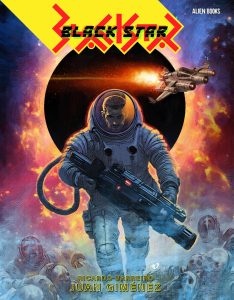
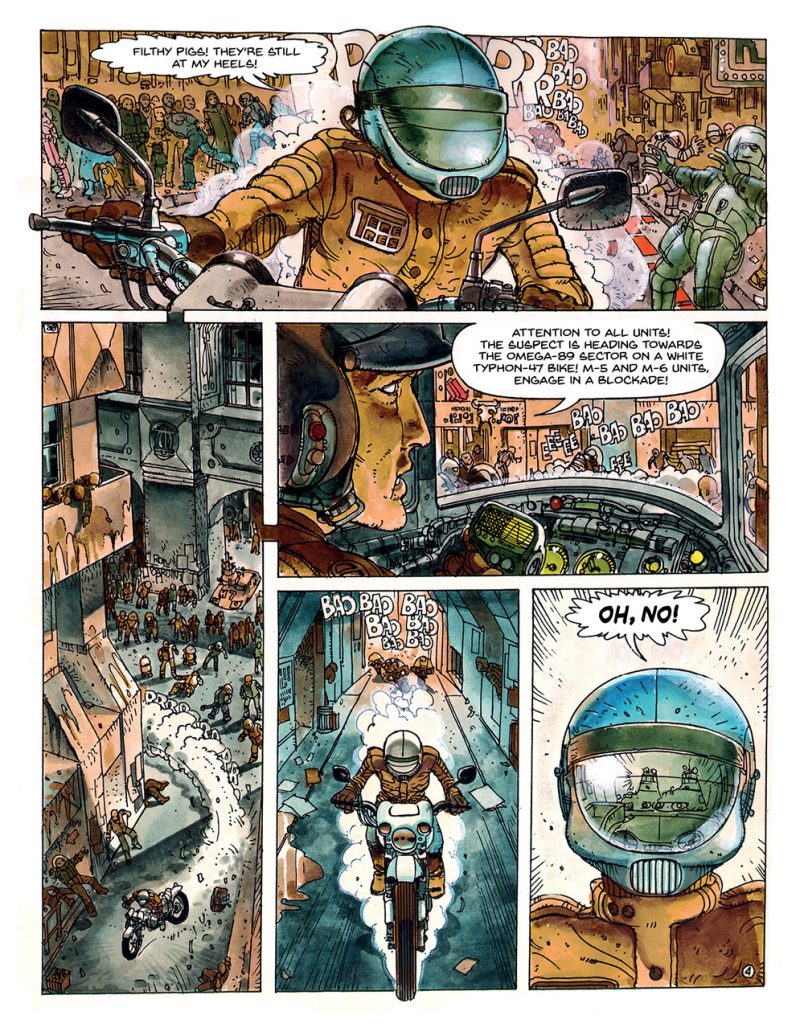
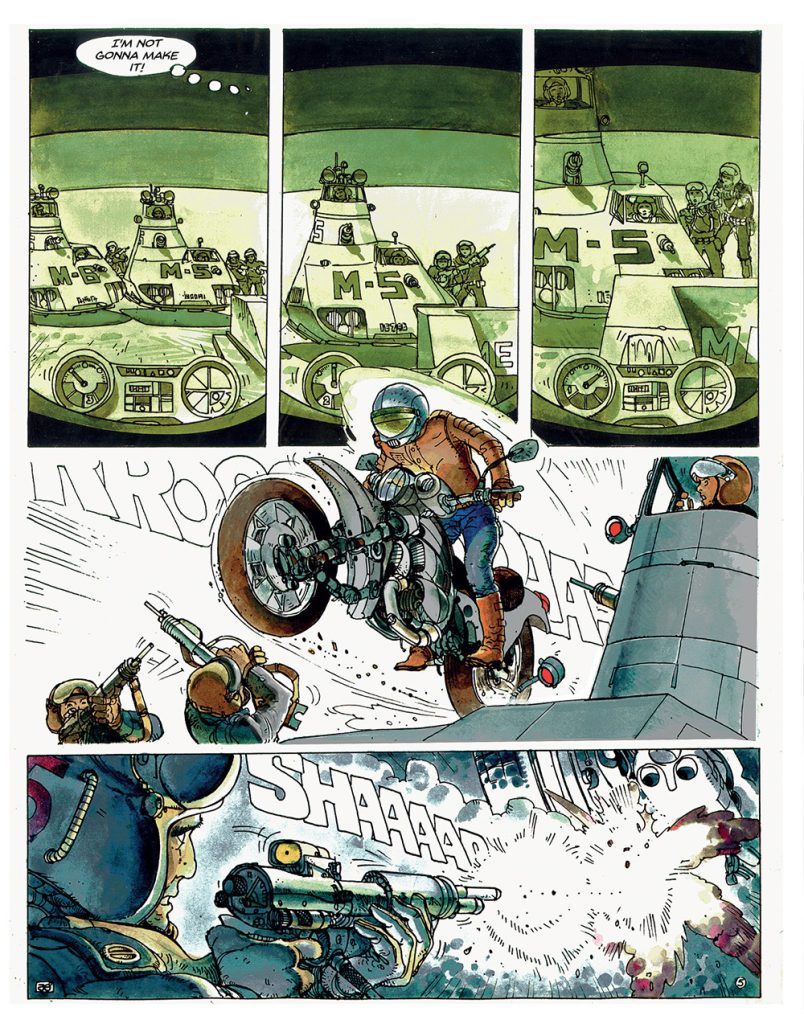
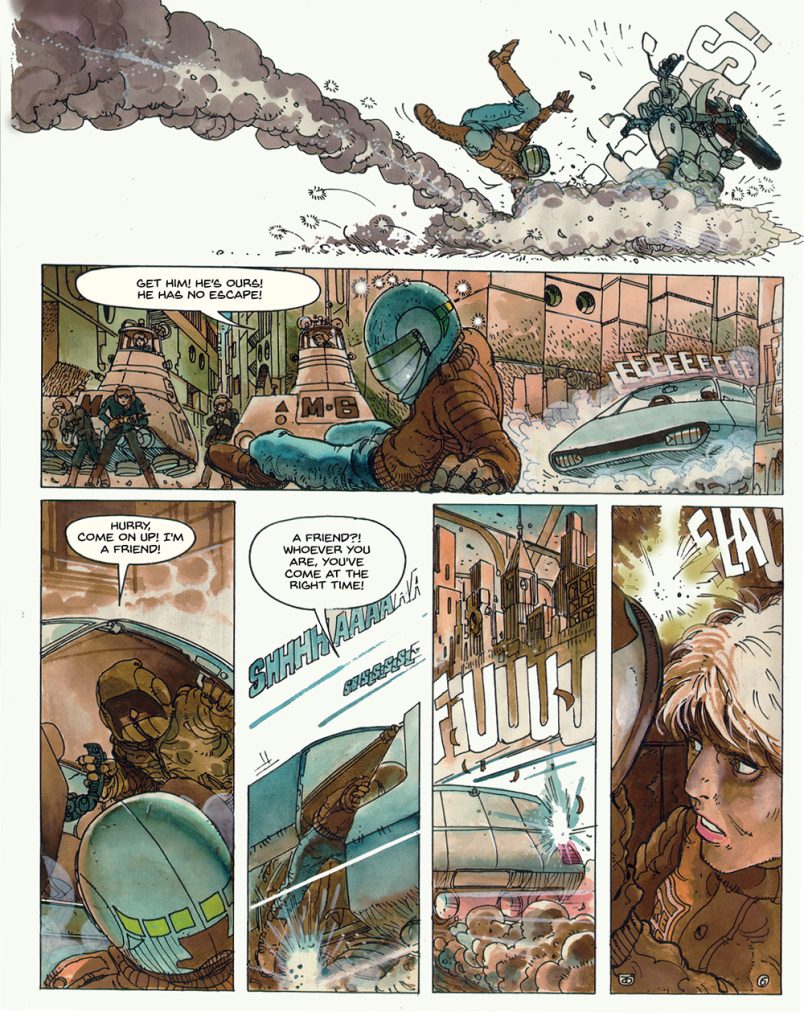
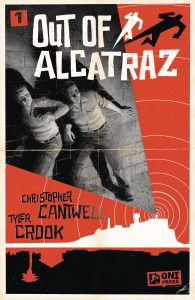
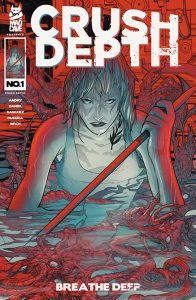
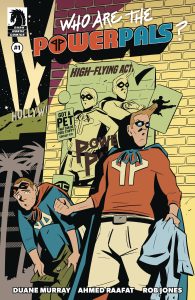
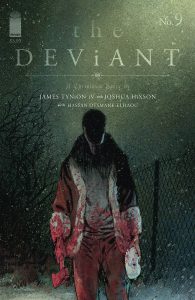
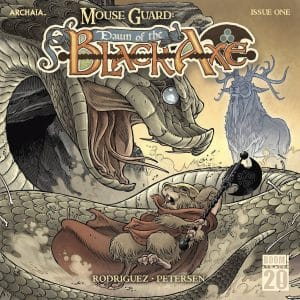
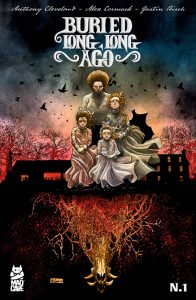





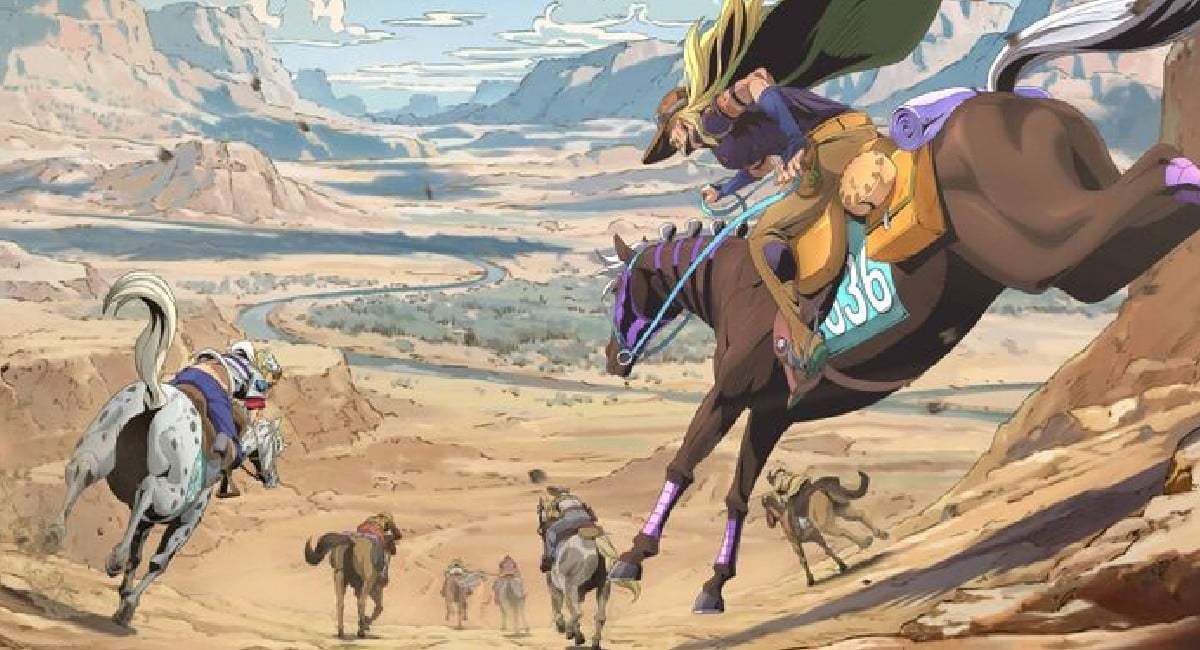

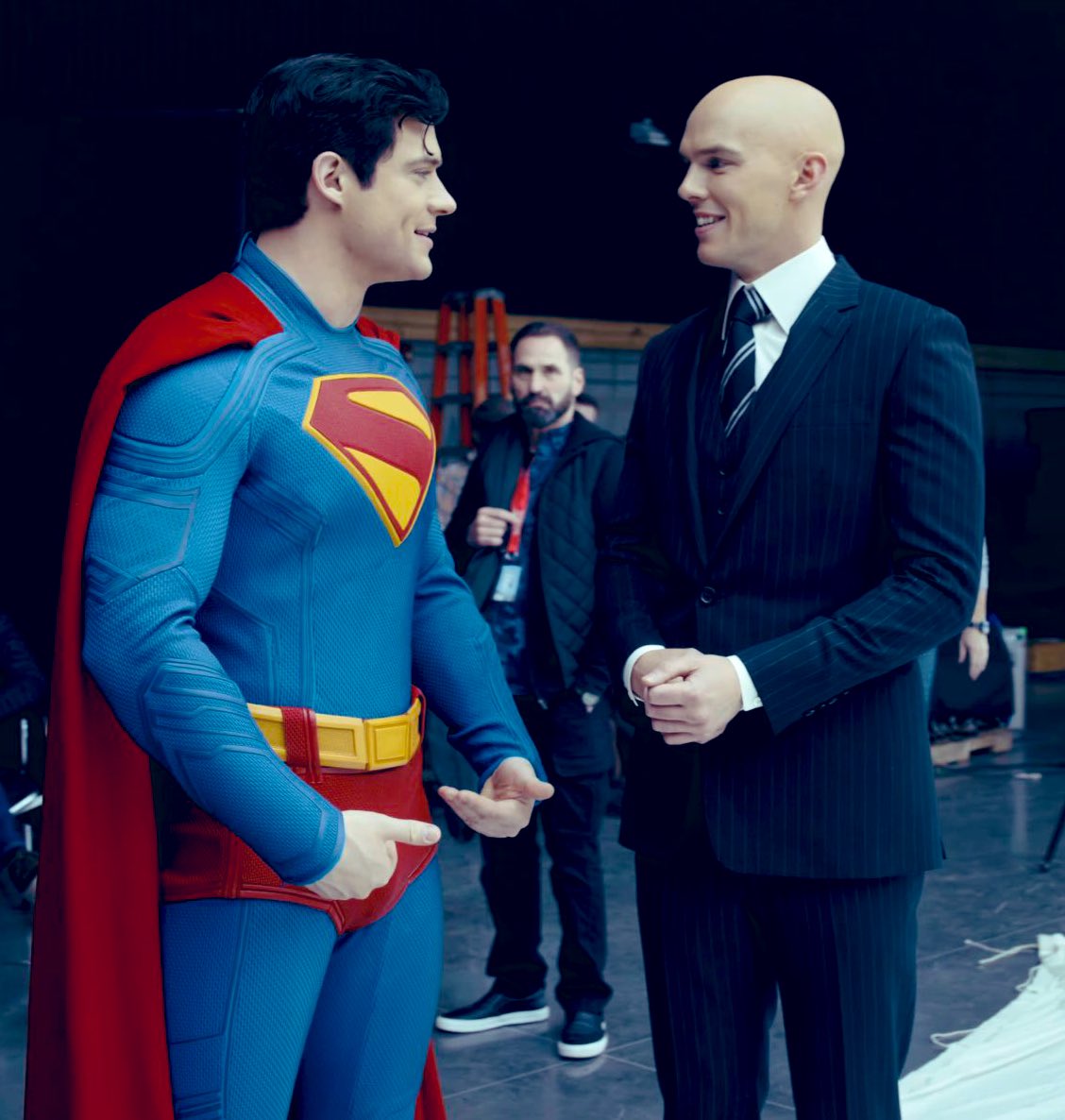




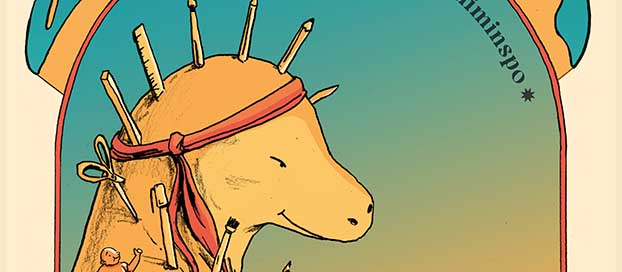
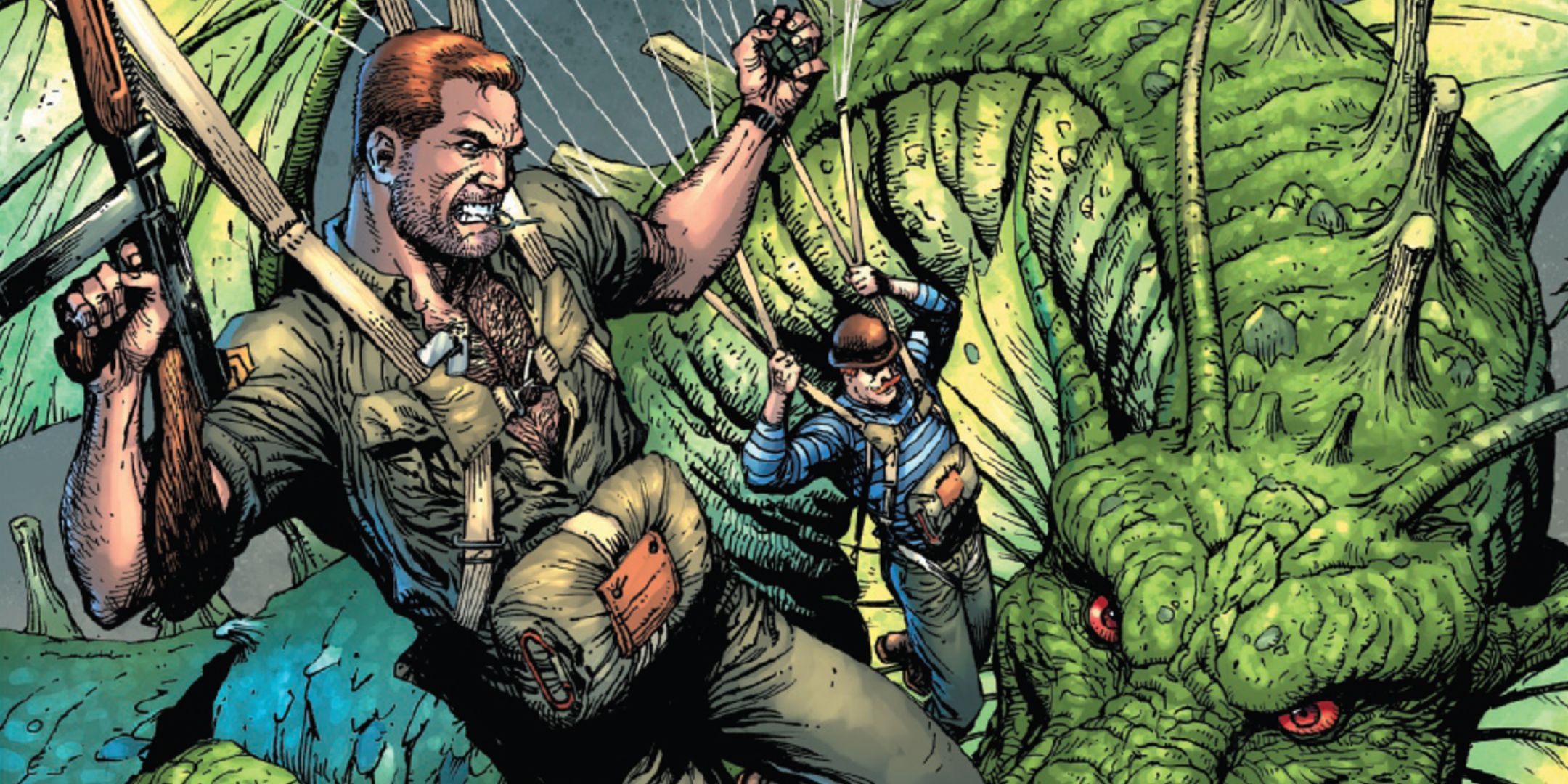



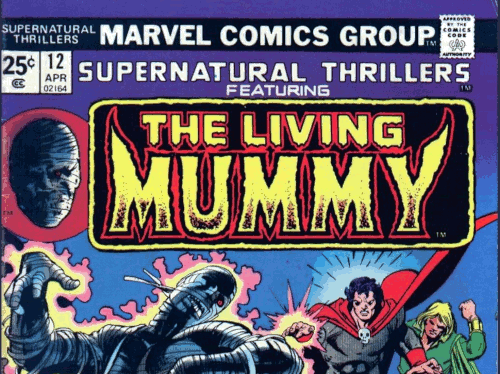


 English (US) ·
English (US) ·